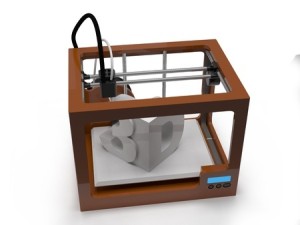 Though 3-D printing was once considered a fantasy best left to science fiction movies, it’s now not only a reality but a growing cornerstone of the medical community. Many, many lives have now been saved thanks to the 3-D printer’s ability to assist in heart surgery.
Though 3-D printing was once considered a fantasy best left to science fiction movies, it’s now not only a reality but a growing cornerstone of the medical community. Many, many lives have now been saved thanks to the 3-D printer’s ability to assist in heart surgery.
Frightening Heart Problems
It’s heartbreaking to think about, but many children are born with heart defects that could cause death without serious and immediate intervention. One baby boy was recently born with a complex form of congenital heart disease and a large hole in the heart. Another little girl, who spent her first three years sitting out from regular activities because she couldn’t breathe right, was discovered at the age of four to have a malformation in her aorta that would require open heart surgery. These stories surface all too often, and until recently many of these children could not receive heart surgery because doctors deemed the procedures too complicated and risky.
3-D Printer Capabilities
Now, however, 3-D printing is providing doctors with exact replicas of patients’ hearts. The printers utilize images from the patients’ MRI or CT scan images as a template and then construct layers of rubber or plastic to form the appropriate 3-D shape. This huge leap in technology allows doctors to plan surgeries and even practice operations for heart problems that would have previously been considered inoperable.
Rather than opening a child’s chest cavity and having to make a quick decision about how to proceed, the surgeon already knows exactly how to best fix the problem and approach the heart for an easier surgery and quicker recovery time. Though it’s too soon for studies to report a direct correlation between 3-D printer heart model use and success rate, the doctors fortunate enough to possess and utilize this technology report incredible results.
Doctors have even used simulated organs to prepare for surgery on a brain tumor or severe cleft palate, and medical students use them to train for complicated procedures. Scientists are predicting that in the next 10 years these printers will actually construct real organs that can be used in transplants using human cells.

 Patient Login
Patient Login